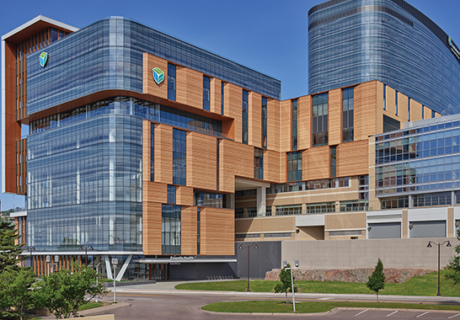Designing Surgical Spaces For Now And Later
When designing facilities with lifespans of around 50 years while at the same time considering the fast advancements in medicine and technology, surgery departments, especially, must be adaptable to accommodate change.
A large piece of a hospital’s revenue comes from the surgery department, so it’s important that this revenue generator be compatible with an evolving future and that when change occurs, required updates may take place in surroundings that support change.
The key is flexibility. However, what does that mean? First, we need to understand that flexibility is horizontal and vertical.
Horizontal flexibility works on the floor plan dimension. Think of the structural grid: What is your bay spacing? How much do you want to push the boundaries and provide distances that are larger in order to provide for greater flexibility in the future?
Also, consider where and how all your MEP systems are distributed. Where are the locations of the electrical and IT closets, and where are the vertical shafts penetrating the floor? The goal is to provide maximum clear areas that can be reconfigured in the future, as needed, without having to modify the “hard” or “fixed” infrastructure of the building.
Vertical flexibility on the other hand looks at the floor-to-floor ceiling heights. We all know that nothing is more challenging and complex than what’s above the ceiling in a surgical suite. Additionally, the support structures for booms, surgical lights, and interventional equipment and their support structures increasingly complicate and congest the above-ceiling area of an OR. The amount of conduits, pipes, and size of A/C ducts requires greater coordination and space.
The more height we can provide, the better off we’ll be in organizing it all, and providing some additional space for future growth is highly encouraged. We need to remember that as technology has evolved, it doesn’t always get smaller. On the contrary, surgery and imaging technology has required higher clear floor-to-ceiling dimensions.
Secondly, we need to establish flexibility in the planning of the department overall. Here are a few examples of what to consider:
- Designers must understand who the users will be (general or specialty), so the OR layout is appropriate. With that information, the main constant is that there will be four zones: physician, circulating area, nurse documentation, and anesthesiologist. How these zones are organized within the room may change depending on the procedure. However, the size of the room should always be able to accommodate any change in this configuration in the future, considering OR throughput and how much income might be tied to it. Different strategies can be applied from the number of prep/post bays/rooms, induction rooms, instrument prep areas, etc.
- In the past few years, there have been a few different operational concepts for the clean core. The primary concern relates to materials flow and maintaining sterility of storage and easy accessibility to it. It’s vital to the success and future flexibility of a surgery suite to think about and plan for the operational flow of patients and materials in and out of a surgical department.
- Hybrid modalities (combined imaging/intervention with surgery) are the future of surgery spaces, and we’re still in the infancy of this transition in surgical approach. In several cases, it’s hard to make a hybrid room financially sustainable given that today there still aren’t many hybrid procedures being performed. Therefore, we need to consider strategies to improve use of these rooms when not in hybrid conditions.
It’s essential to talk with clients to better understand what will serve them in balancing present and future needs, and what level of flexibility they’re considering. Remember, it was at the beginning of this millennium that we started converging surgery with intervention. The interventional platform was created and today it’s vastly applied, but it was not an easy change.
The most successful examples are those that had the ability to accommodate changes and include new concepts without having to completely renovate their departments. This is the lesson that we should follow.


